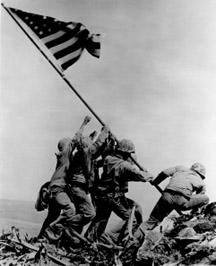Seaman 2nd Class Warren P. Hickok
Navy Seaman Missing from Pearl Harbor Attack is Identified
The Department of Defense POW/Missing Personnel Office (DPMO) announced today that the remains of a U.S. Navy seaman missing in action from the Dec. 7, 1941, attack on Pearl Harbor have been identified and will soon be returned to his family for burial with full military honors.
He is Seaman 2nd Class Warren P. Hickok of Kalamazoo, Mich. The family has not set a date for his burial.
Hickok was assigned to the Light Mine Layer the USS Sicard when the Japanese attacked Pearl Harbor. Many crewmembers from the USS Sicard, including Hickok, were dispatched to assist the crew of the USS Cummings, a destroyer docked nearby. The Cummings succeeded in getting underway and clearing Pearl Harbor with no casualties reported. However, an investigation into those still unaccounted-for after the attack surmised that Hickok may have been a casualty aboard the battleship, the USS Pennsylvania, since some crewmen from the USS Sicard had been dispatched to the USS Pennsylvania during the attack. But records indicate that Hickok was not lost aboard that ship.
In the days following the attack, burial details interred many of the unknown dead in Nuuanu Cemetery on Oahu. Among those buried were an unknown sailor identified only as X-2. Following the war, the Army Graves Registration Service oversaw the disinterment of unknown remains, including the X-2 remains. They could not be identified and were reburied in Section E, Grave 73 at the National Memorial Cemetery of the Pacific, known as the Punchbowl, on June 9, 1949.
In 2004, an avocational historian contacted the Joint POW/MIA Accounting Command (JPAC) in Hawaii and suggested that the remains in Grave 731 may be those of Hickok. Based on available records, JPAC exhumed the grave in June 2005. Forensic anthropologists at JPAC were able to match those remains, including dental remains, with detailed information found in Hickok's World War II medical and dental records.
Of the 88,000 unaccounted-for Americans from all conflicts, 78,000 are from World War II.
 Semper Fi
Semper Fi






0 Comments:
Post a Comment
<< Home